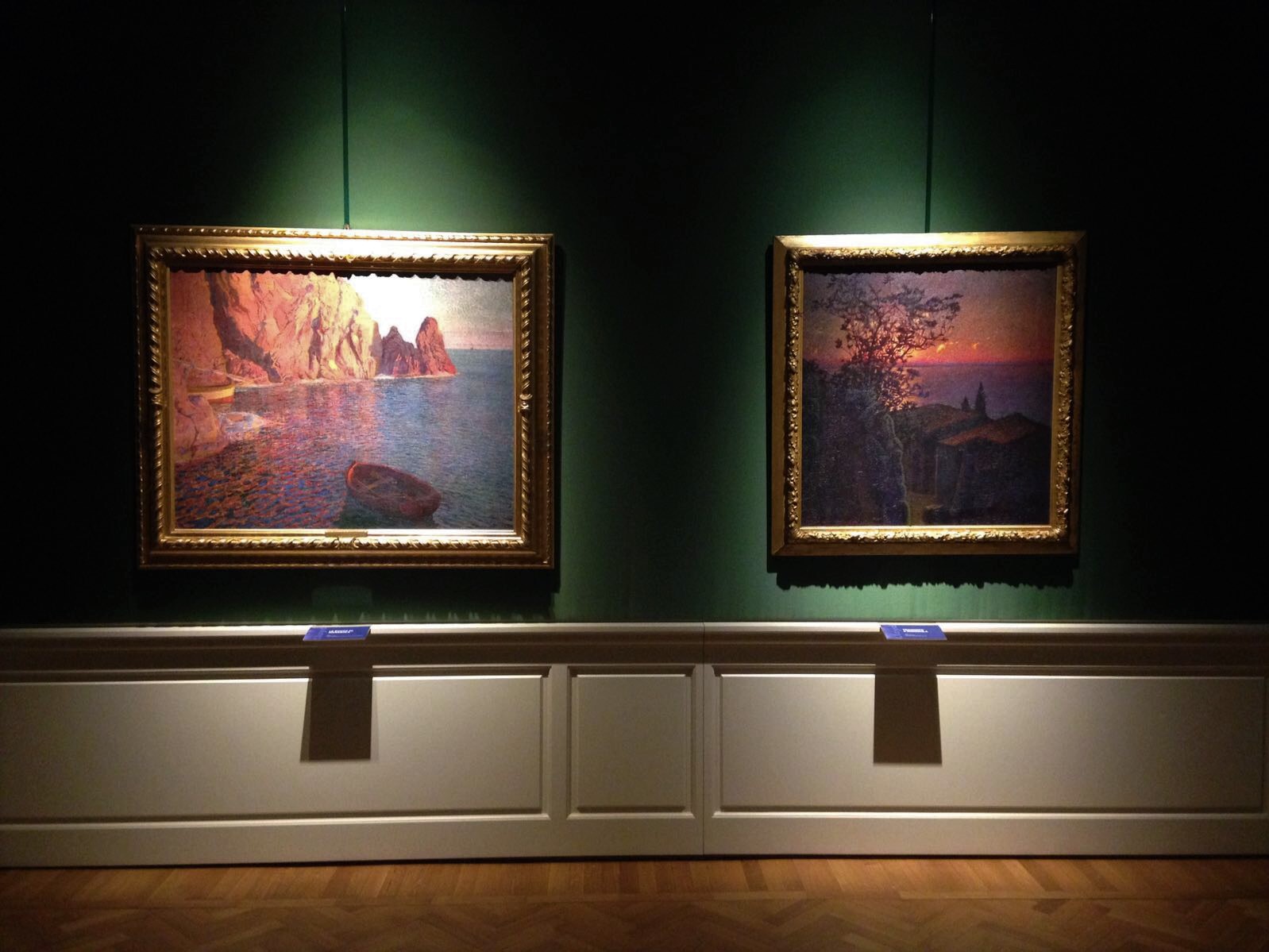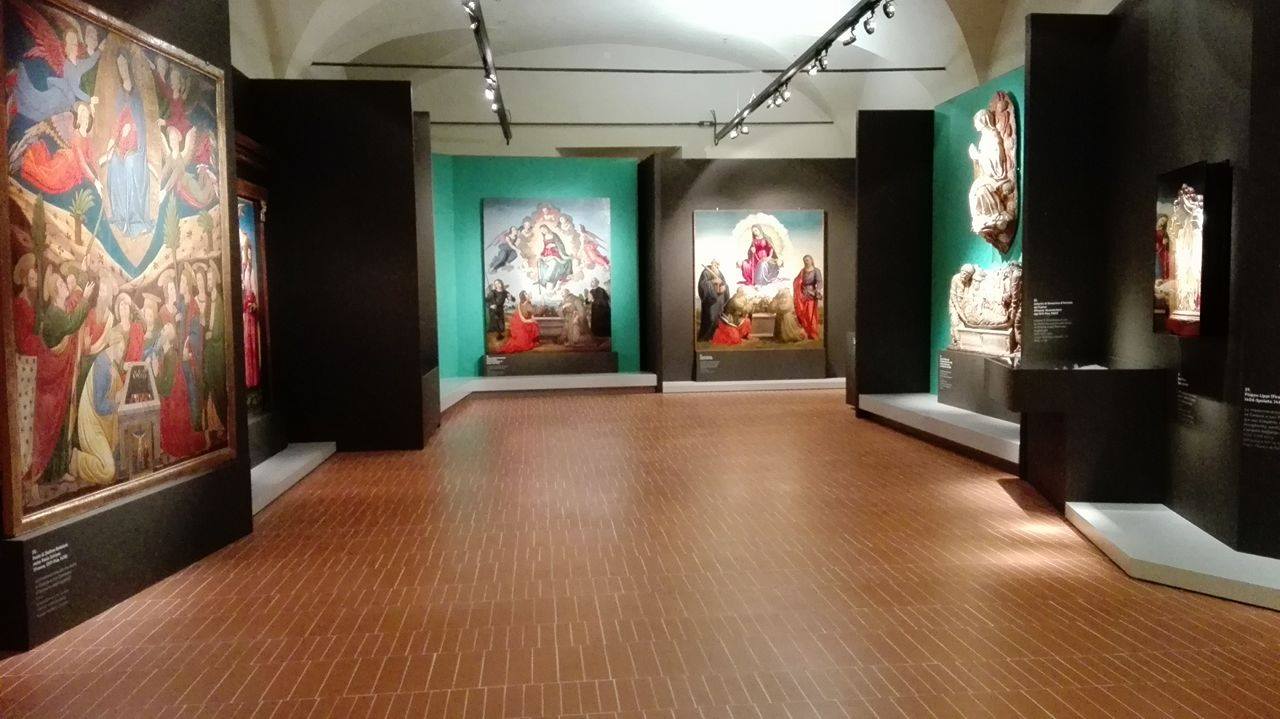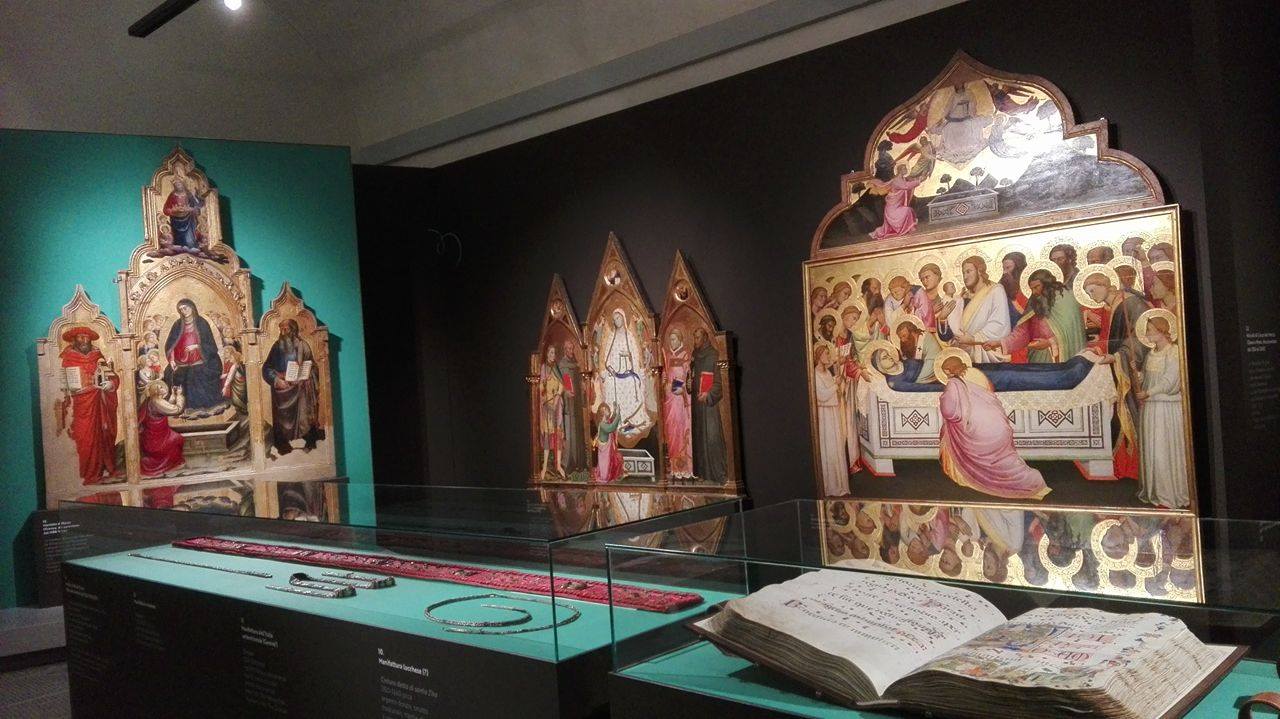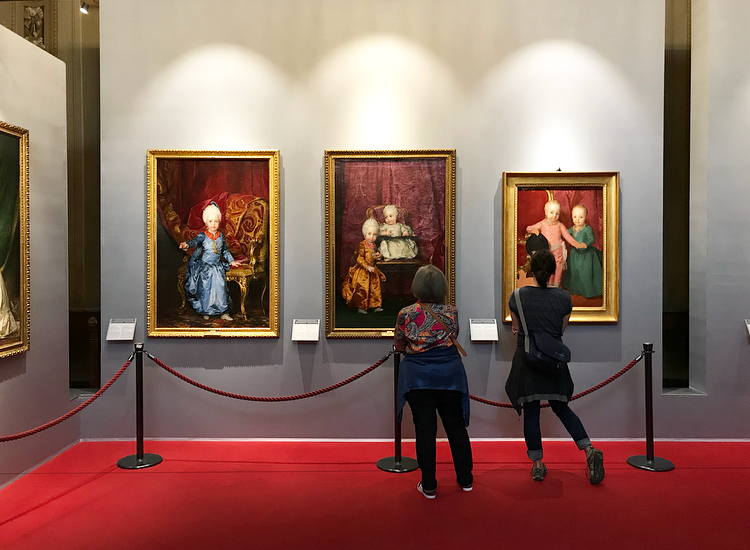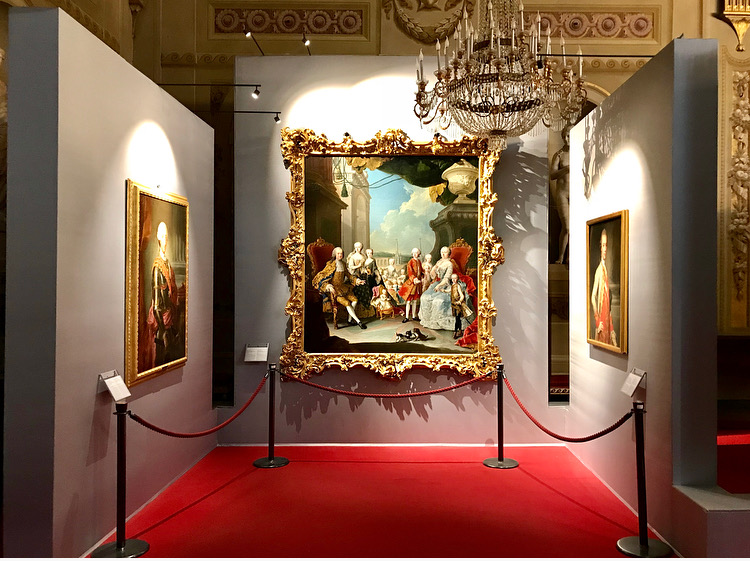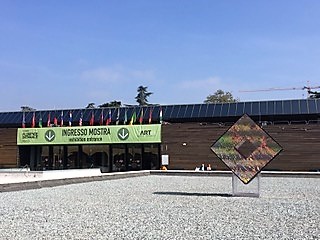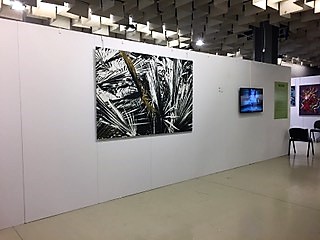La natura nei dipinti su paravento dal XV al XVII secolo
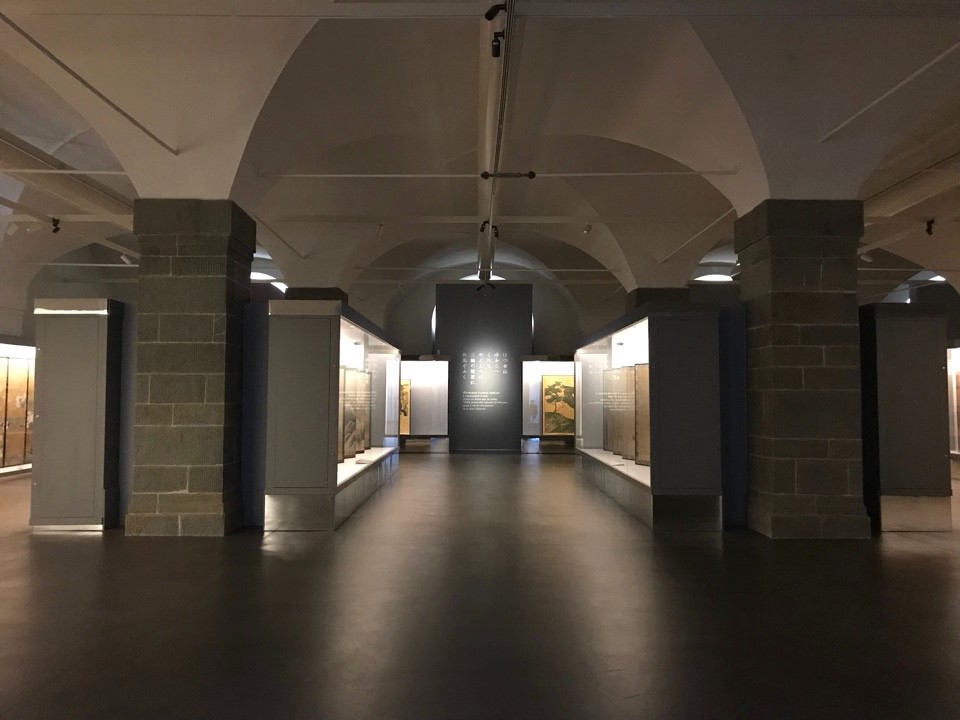
26 settembre 2017 – 7 gennaio 2018
Galleria degli Uffizi, Firenze
Di Costanza Peruzzi (Università degli Studi di Firenze)
La Sala Magliabechiana della Galleria degli Uffizi ospita, dal 26 Settembre scorso fino al 07 Gennaio 2018, una mostra che celebra il 150° anniversario dell’amicizia tra l’Italia e il Giappone, la prima nel suo genere a livello europeo. Trentanove magnifici paraventi giapponesi, alcuni dei quali mai esposti al pubblico neppure in patria, sono ammirabili nel celebre museo fiorentino. Le opere, causa la loro estrema fragilità, non saranno esposte tutte e trentanove contemporaneamente, ma a gruppi di tredici per volta, a rotazione mensile.
Come si evince dal titolo della mostra, viene messa in scena l’epoca d’oro della pittura giapponese, dal XIV al XVII secolo, epoca che coincide fortunosamente con un periodo altrettanto felice per l’arte italiana, e fiorentina in particolare, quello convenzionalmente definito come “Rinascimento”, arrivando poi fino al Seicento.
Del tutto inusuale la scelta dei curatori di esporre in sala un unico pannello esplicativo in cui sono state riassunte tutte le notizie ritenute necessarie per comprendere quello che il visitatore sta per osservare: prima di tutto il motivo della mostra (la celebrazione dei 150 anni di relazioni diplomatiche bilaterali tra il nostro paese ed il Giappone); il tipo di opere in mostra (pitture di paesaggio e di natura); gli estremi temporali che segnano il periodo in cui queste delicate opere furono realizzate (dall’epoca Muromachi all’inizio dell’epoca Edo); le due tendenze artistiche a cui appartengono, ovvero la pittura “monocroma ed evocativa, fatta di vuoti essenziali e veloci” legata alla filosofia zen cinese ed alla società guerriera nonché tipica dei templi e delle residenze dei samurai, e la pittura più propriamente giapponese, caratterizzata da fondi oro e campiture di colore piatte, tipica delle residenze aristocratiche. Il pannello inoltre informa il visitatore che tutte le opere sono supportate dal classico formato del paravento o delle porte scorrevoli. E con queste nozioni la visita ha inizio.
L’esposizione occupa l’intera Aula e i pilasti al centro ne scandiscono lo spazio, ma il visitatore è quasi del tutto libero di muoversi senza seguire un percorso preciso, infatti solo l’inizio del percorso è indicato. Le uniche fonti di luce provengono dalle vetrine, ognuna delle quali accoglie una singola opera. Si crea quindi un ambiente intimo e contemplativo, che suscita l’impressione di trovarsi in un luogo sacro, come fossimo in uno di quei templi, sede originaria dei paraventi.
L’epoca, i materiali, la provenienza e una breve descrizione di ciò che è rappresentato sulla carta, e talvolta sulla seta, nonché lo stile di ogni paravento, compare nelle didascalie che corredano ogni vetrina.
Rimane però non chiarita la definizione di classico riferita al formato di queste opere. Al visitatore degli Uffizi, appena uscito da sale in cui i quadri (tavola, tela, cornice) dominano le pareti, potrebbe risultare non ovvia questa definizione. Magari una spiegazione in più circa la storia, l’utilizzo e la diffusione di questi paraventi e ciò che appunto li rende classici, sarebbe stata d’aiuto, poiché l’importanza di questi elementi d’arredo, sfruttati anche come supporto pittorico, è un dato piuttosto fondamentale per la comprensione della loro natura.
Solo il catalogo della mostra (ed. Giunti) riporta queste informazioni. I paraventi e le porte scorrevoli arrivarono in Giappone dalla Cina e dalla Corea e col tempo si consolidarono nella tipologia della coppia di paraventi a sei ante, normalmente posizionati a zig-zig e utilizzati per definire gli spazi interni dell’abitazione e allo stesso tempo per schermare il flusso d’aria proveniente dall’esterno. L’interno della tradizionale casa giapponese è infatti volutamente collegato all’ambiente esterno ed alla natura e a questo proposito Miyata Ryōhei, Commissario dell’Agenzia per gli Affari Culturali del Giappone ha affermato: «questa rassegna offre al pubblico italiano la possibilità di ammirare lo splendore della cultura artistica giapponese e comprenderne la profonda sensibilità nei confronti della natura.»
La decorazione di paraventi e porte scorrevoli, in quanto elementi d’arredo di dimore domestiche, castelli e templi, divenne manifestazione del potere del loro proprietario e quindi oggetto di autorevoli committenze ai più famosi pittori, proprio come accadeva anche in Europa. Fu proprio grazie a queste dinamiche di committenze che l’arte giapponese, in quei secoli, arrivò a lambire la vetta più alta della sua espressione, che «possiamo senz’altro definire Rinascimento giapponese» (Eike Schmidt, Direttore delle Gallerie degli Uffizi).
La mostra, come il catalogo, è curata da Rossella Menegazzo (Professoressa dell’Università degli Studi di Milano) con la collaborazione di Asaka Hiroshi, Watada Minoru, Tsutsui Tadahito, ed è compresa nel biglietto di ingresso agli Uffizi.
Per maggiori informazioni potete consultare il sito ufficiale degli Uffizi a questo link.
The Japanese Renaissance at the Uffizi
Nature on painted screens from the XV to the XVII centuries
26 September 2017- 7 January 2018
Uffizi Gallery, Florence
Translated by Nona Debenham (Istituto Lorenzo de’ Medici)
The Magliabechiana Hall of the Uffizi Gallery hosts, from 26 September until January 7, 2018, an exhibition celebrating the 150th anniversary of friendship between Italy and Japan, the first of its kind at European level. Thirty magnificent Japanese screens, some of which never exposed to the public at back in Japan, are visible in the famous Florentine museum. The thirty-nine works, which are extreme fragility, will not be exposed all simultaneously, but in groups of thirteen at a time, in a monthly rotation.
As illustrated by the title of the exhibition, the golden age of Japanese painting, from the fourteenth to the seventeenth century, is being staged, which coincides fortunately with an equally happy period for Italian art, and Florence in particular, the conventionally defined as “Renaissance”, up to the seventeenth century.
It is quite unusual for the curators to exhibit in the room a single explanatory panel where all the information deemed necessary to understand what the visitor is going to observe is summarized. The panel contains first of all the reason for the exhibition (the celebration of 150 years of relationships bilateral diplomats between our country and Japan); the type of works on display (landscape and nature paintings); the temporal extremes that mark the period when these delicate works were made (from the Muromachi era at the beginning of the Edo period); the two artistic tendencies to which they belong, the “monochromatic and evocative painting made of essential and fast voids” linked to the Zen Chinese philosophy and the war society as well as typical temples and residences of the samurai, and the most proper Japanese painting, characterized by from gold-colored and flat colors, typical of aristocratic residences. The panel also informs the visitor that all works are supported by the classic screen size or sliding doors. And with this knowledge, the visit begins.
The exhibition occupies the entire room and the pylons mark the center space, but the visitor is completely free to move without following a precise path, in fact, only the beginning of the path is indicated. The only sources of light come from the showcases, each of which has a single work. This creates an intimate and contemplative environment that gives the impression of being in a sacred place as if the visitor was in one of those temples, the original location of the screens.
The time, materials, source and a brief description of what is depicted on paper, or silk, as well as the style of each screen, appears in the captions accompanying each showcase.
However, the classical definition of the format of these works remains unclear. The Uffizi visitor, who has just emerged from the rooms where the pictures (table, canvas, frame) dominate the walls, may not be obvious. Perhaps more explanation about the history, use, and diffusion of these screens, and what makes them classic, would have been helpful because of the importance of these furnishing elements, also exploited as pictorial support, is a rather basic fact for understanding their nature.
Only the catalog of the exhibition (Giunti) reports this information. Sliding screens and sliding doors came to Japan from China and Korea, and with time they grew into this type of six-door pair of screens, normally zig-zig-shaped and used to define the interior spaces of the home and at the same time shield the air flow coming from the outside. The interior of the traditional Japanese house is intentionally linked to the outdoor environment and nature, and Miyata Ryöhei, Commissioner of the Japanese Cultural Affairs Agency, said: “This exhibition offers the Italian public the opportunity to admire the splendor of Japanese art culture and understand its profound sensitivity to nature. ”
The decoration of screens and sliding doors, as home furnishings, castles, and temples, became the manifestation of the power of their owner and was, therefore, the subject of authoritative commissions to the most famous painters, just as in Europe. It was thanks to these dynamics of commissions that Japanese art, in those centuries, came to shine at the highest peak of its expression, which “we can certainly define Japanese Renaissance” (Eike Schmidt, Director of Uffizi Galleries).
The exhibition, like the catalog, is curated by Rossella Menegazzo (Professor of the University of Milan) with the collaboration of Asaka Hiroshi, Watada Minoru, Tsutsui Tadahito, and is included in the entrance ticket to the Uffizi.
For more information, please consult the official Uffizi website.

